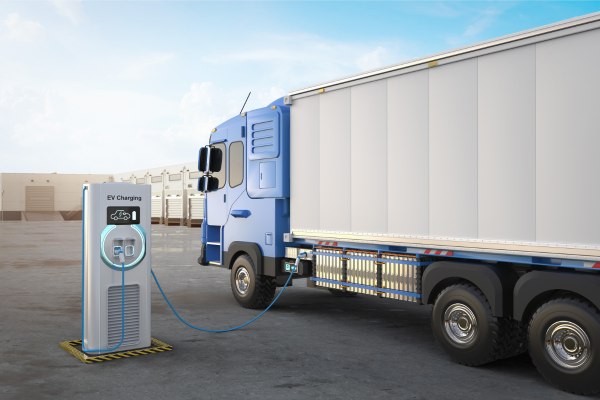Table of Contents:
- Introduction
- Top 10 Ev Market Trends in 2024
- Top 5 Reasons to Buy EV in 2024.
- Conclusion
- Frequently Asked Questions
Introduction:
As the world moves towards a more sustainable future, electric vehicles (EVs) continue to revolutionize the automotive industry. With advancements in technology, infrastructure, and consumer preferences, the EV market is poised for significant growth in 2024. In this article, we’ll delve into the top 10 EV market trends to watch out for in the year ahead, offering a realistic perspective on the shifts and developments shaping the industry but in last we give a top 5 reasons to buy EVs in 2024.
Top 10 EV Market Trends to watch in 2024
1. Continued Expansion of EV Models in 2024:

In 2024, we can expect to see a continued proliferation of EV models from both traditional automakers and new entrants. As battery technology improves and manufacturing processes become more efficient and automakers will introduce a wider range of EVs across different segments, including.
- Sedans
- SUVs
- Trucks
This expansion of choice will appeal to a broader audience of consumers, driving further adoption of electric vehicles.
2. Enhanced Battery Technology in 2024:

Battery technology remains a cornerstone of the EV industry, and in 2024, we anticipate significant advancements in this area. Manufacturers will continue to invest in research and development to improve battery performance, including
- Increased energy density,
- Faster charging times,
- Longer lifespan.
These improvements will address key concerns such as range anxiety and charging infrastructure, making EVs more appealing to mainstream consumers.
3. Rise of Solid-State Batteries:

While lithium-ion batteries currently dominate the EV market, solid-state batteries are poised to emerge as a game-changer in 2024. These next-generation batteries offer
- Higher energy density,
- Improved safety, and
- Faster charging capabilities compared to traditional lithium-ion cells.
As production processes mature and costs decline, we can expect to see solid-state batteries powering a new generation of EVs, further accelerating the transition away from internal combustion engines.
4. Evolution of Charging Infrastructure in 2024:

The expansion and enhancement of charging infrastructure will be a critical trend in 2024. Governments, utilities, and private companies will continue to invest in charging networks, deploying fast chargers along highways, in urban areas, and at workplaces. Additionally, advancements in charging technology, such as wireless charging and ultra-fast chargers, will make EV ownership more convenient and accessible to a wider audience.
5. Integration of Renewable Energy:

As the world seeks to reduce carbon emissions, the integration of renewable energy sources with EV charging infrastructure will gain momentum in 2024. Solar-powered charging stations, coupled with energy storage solutions, will enable EV owners to charge their vehicles using clean, sustainable energy. This trend aligns with the broader shift towards decarbonization and will contribute to the environmental benefits of electric transportation.
6. Focus on Sustainability:
Sustainability will remain a key focus for both consumers and automakers in 2024. From sourcing raw materials to manufacturing processes to end-of-life recycling, there will be increased scrutiny on the environmental impact of EVs throughout their lifecycle. Automakers will prioritize sustainable practices, such as
- Using recycled materials
- Reducing waste,
- To appeal to environmentally conscious consumers
- Meet regulatory requirements.
7. Emergence of Electric Autonomous Vehicles in 2024:
The convergence of electric and autonomous vehicle technologies will accelerate in 2024, leading to the emergence of electric autonomous vehicles (AVs). Companies will continue to invest in self-driving technology, leveraging electric platforms for their AV fleets. These vehicles promise not only reduced emissions but also improved safety and efficiency, reshaping the future of transportation in urban centres and beyond.
8. Shift in Ownership Models:

In 2024, we’ll see a shift in ownership models as consumers embrace alternative mobility solutions. Subscription services, car-sharing platforms, and ride-hailing apps will offer flexible alternatives to traditional car ownership, particularly in urban areas where space and congestion are concerns. This trend towards mobility-as-a-service (MaaS) will drive demand for electric vehicles, which are well-suited to shared and on-demand transportation models.
9. Regulatory Support and Incentives:
Governments around the world will continue to implement supportive policies and incentives to accelerate the adoption of electric vehicles. This includes
- Subsidies for EV purchases,
- Tax incentives, and
- Emissions regulations that favour zero-emission vehicles.
Additionally, cities may introduce measures such as low-emission zones and congestion pricing to encourage the transition to electric transportation and improve air quality.
10. Global Market Growth:
Finally, the EV market will experience robust growth on a global scale in 2024. Emerging markets, particularly in Asia and Latin America, will drive demand for electric vehicles as urbanization, air quality concerns, and government initiatives spur adoption. Established markets like Europe and North America will also continue to see steady growth as EV infrastructure matures and consumer awareness increases.
Top 5 reasons to Buy EVs In 2024.
1. Continued Expansion of EV Models:

- Traditional automakers such as Volkswagen, Ford, and General Motors are aggressively ramping up their EV offerings, with plans to introduce multiple new models in 2024 across various price points and segments.
- New entrants to the EV market, including startups like Rivian, Lucid Motors, and Fisker, are gaining traction with innovative designs and advanced technology.
- Collaborations between automakers and tech companies, such as the partnership between Hyundai and Apple, are fuelling speculation about new entrants and disruptive models.
2. Evolution of Charging Infrastructure:
- Governments and utilities are investing billions of dollars in expanding and upgrading EV charging infrastructure, with a focus on fast chargers along highways, urban areas, and key travel corridors.
- Innovative charging solutions, such as bi-directional chargers and vehicle-to-grid (V2G) technology, are being deployed to maximize the efficiency and flexibility of charging networks.
- Partnerships between automakers, charging providers, and energy companies are driving collaboration and investment in charging infrastructure, ensuring widespread access for EV owners
3. Emergence of Electric Autonomous Vehicles:
- Companies like Tesla, Waymo, and Cruise are leading the development of electric autonomous vehicles, leveraging AI and machine learning to achieve Level 4 and Level 5 autonomy.
- Electric AVs promise to revolutionize transportation by offering safer, more efficient mobility solutions for urban and suburban environments.
- Regulatory frameworks and safety standards for electric AVs are being developed to ensure public acceptance and mitigate risks associated with self-driving technology.
4. Shift in Ownership Models:
- Subscription services, car-sharing platforms, and ride-hailing apps are transforming the way people access and use transportation, reducing the need for private vehicle ownership.
- Electric mobility providers, such as Tesla’s “Robo taxi” network and Uber’s EV incentives, are incentivizing consumers to switch to electric vehicles for shared and on-demand transportation.
- Mobility-as-a-service (MaaS) platforms are integrating EVs into multi-modal transportation networks, offering seamless connectivity and personalized mobility solutions.
5 Global Market Growth:
- Emerging markets in Asia, particularly China and India, are experiencing rapid growth in EV adoption, driven by urbanization, pollution concerns, and government incentives.
- European countries like Norway and the Netherlands are leading the transition to electric mobility, with ambitious targets for phasing out fossil fuel vehicles and expanding charging infrastructure.
- North America, despite lagging behind Europe and Asia in EV adoption, is seeing increased investment in charging infrastructure and regulatory support for electric vehicles at the federal, state, and local levels.
Conclusions:
In conclusion, the electric vehicle market is poised for significant growth and innovation in 2024, driven by many factors like
- Advancements in technology,
- Infrastructure, and
- Consumer preferences.
From the expansion of EV models to the evolution of battery technology to the rise of electric autonomous vehicles, the industry is undergoing a profound transformation. By staying abreast of these top 10 market trends, stakeholders can navigate the evolving landscape of electric transportation and capitalize on the opportunities that lie ahead. By staying informed about these key trends and developments, stakeholders can navigate the opportunities and challenges of the electric vehicle market and contribute to a more sustainable future.

Frequently Asked Questions:
Several factors contribute to the growth of the EV market in 2024, including increasing environmental concerns, advancements in battery technology leading to longer range and lower costs, government incentives and regulations favoring EV adoption, and growing consumer awareness of the benefits of electric vehicles in terms of performance and maintenance.
In 2024, the infrastructure for electric vehicles is expected to improve significantly. There will be a rapid expansion of charging networks, including fast chargers along highways and in urban areas. Additionally, innovations in charging technologies such as wireless charging and ultra-fast charging are likely to become more prevalent, addressing concerns about charging time and convenience.
In 2024, we anticipate continued advancements in EV battery technology, leading to batteries with higher energy density, faster charging capabilities, and longer lifespans. Solid-state batteries may start to gain traction, offering improved safety and energy efficiency compared to traditional lithium-ion batteries. Moreover, recycling and second-life applications for EV batteries are likely to become more standardized, addressing concerns about sustainability.
Traditional automotive manufacturers are increasingly shifting their focus towards electric vehicles to stay competitive in the evolving market landscape. In 2024, we can expect to see more established automakers introducing new electric models and investing heavily in research and development of EV technology. Collaboration with tech companies and startups in the EV space is also likely to become more common as traditional manufacturers strive to innovate and keep pace with industry trends.
Despite the promising outlook, several challenges could potentially hinder the growth of the EV market in 2024. These challenges include concerns about the availability and sustainability of critical raw materials for battery production, potential strain on electricity grids due to increased EV adoption, regulatory uncertainty, and the need for further investment in charging infrastructure, particularly in rural and underserved areas. Overcoming these challenges will require coordinated efforts from policymakers, industry stakeholders, and technology innovators.

